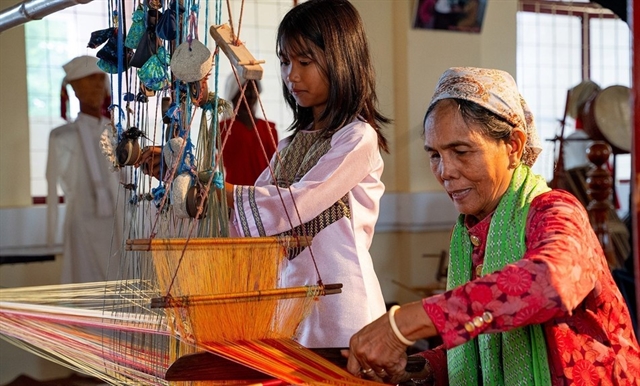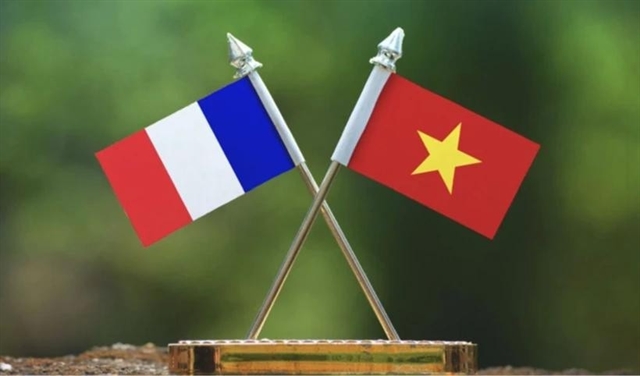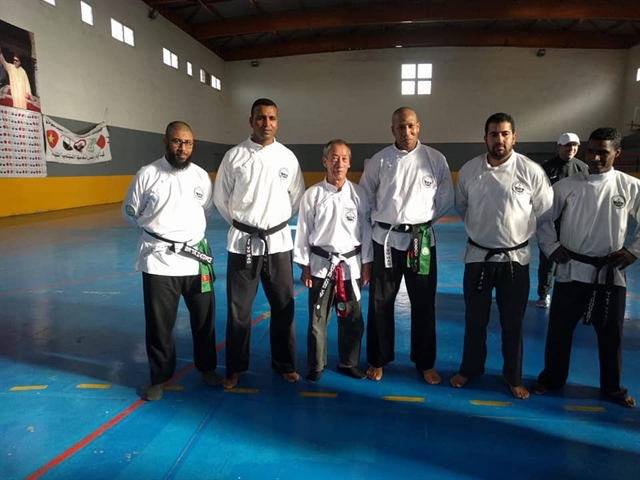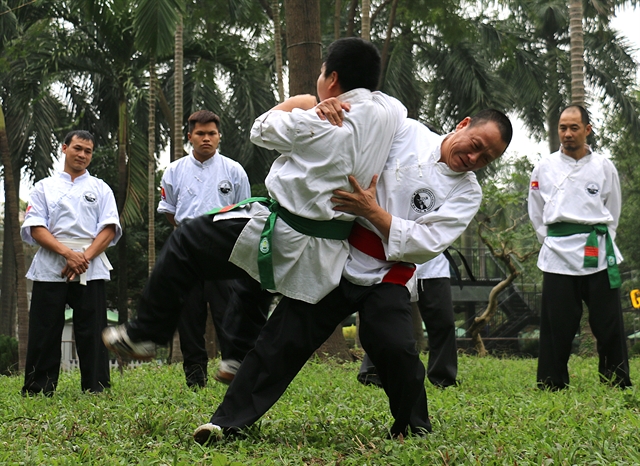 Features
Features

Maybe not many Vietnamese people know Việt Vũ Đạo, a kind of Vietnamese traditional martial arts), but in France, it is the popular martial arts sect and is known widely in Marseille port city.
by Thanh Nga
Not many people know about Việt vũ đạo, a form of traditional Vietnamese martial arts, but in France, it has become a popular sport, particularly in the port city of Marseille.
Under Vietnamese-French master Nguyễn Công Tốt, Việt vũ đạo has been developing in France and Europe for nearly half a century.
“In the 60s and 70s, there weren't many Vietnamese people in Marseille. I was beaten up several times. Then I couldn’t bear it any more and fought back,” Tốt was quoted as saying by Việt Nam Television (VTV).
“Then a Frenchman told me that I had a beautiful form of kung fu and wanted me to teach him. That was the start of Việt vũ đạo in France,” said Tốt.
According to Tốt, “đạo” is a road and morals, “vũ” shows the philosophy of the sect towards the honest and humanity.
Việt vũ đạo has the typical characteristics of Vietnamese culture, tradition and humanity. It takes its morals from love.
The Vietnamese martial arts' outfit is a simple white shirt and black trousers. His belt is black on one side and white on the other to show he originated from farmers.

|
| Master Nguyễn Văn Tốt (third left) and his followers. Photo Facebook of Nguyễn Công Tốt |
Martial arts profession
Tốt was born in 1954 in Sài Gòn (now Hồ Chí Minh City). His family left Việt Nam in 1960 to live in Marseille.
He started training in martial arts at the age of five with famous masters from Sài Gòn at that time. After arriving in France, he continued to train in karate and judo.
Based on mastering various forms of martial arts, Tốt established Việt vũ đạo in 1975. Together with developing his sect, he studied at a law school in France and became a lawyer.
“When I established the sect, no one knew what Việt vũ đạo was. So I had to prove the techniques used in Việt vũ đạo were transcendent and second to none. Moreover, it was difficult to ask authorities for permission to open a martial art club and find the money to keep it going,” Tốt said.
“Việt vũ đạo mainly teaches people how to defend themselves. Trainers must ensure their own safety and minimise the danger for the attacker,” he said.
“Việt vũ đạo has both performance and combat disciplines. Learners can perform with sticks, clubs and swords. I ordered weapons and clothing from HCM City.”
Over 50 years, Việt vũ đạo has become one of the five biggest Vietnamese martial arts sects in the world, with around 3,000 practitioners in Europe alone.

|
| Maser Đào Văn Minh performs Việt vũ đạo. VNS Photo Đoàn Tùng |

|
| Master Đào Văn Minh train followers of Việt Vũ Đạo. VNS Photo Đoàn Tùng |
“Now I'm focused on training coaches to develop Việt Vũ Đạo. I think that if a sect wants to exist and develop, it depends on its propagation and its trainers. The trainers are very important,” said Minh.
Nguyễn Đức Hoàn is one of the key coaches.
Hoàn, 31, from the Institute of Vietnamese Culture and Belief Research, now leads a 30-member club in Văn Giang District, Hưng Yên Province, although he lives in Hà Nội.
“I am a lover of martial arts. I have trained in traditional martial arts and karate, and I've opened classes to teach them. However, after meeting Minh I decided to learn Việt vũ đạo,” Hoàn told Việt Nam News.
“I had the chance to meet Tốt and realised that he is a wonderful master who always wants to develop Vietnamese martial arts in this country and around the world. I have given my heart to this sect, and promised myself to develop Việt vũ đạo.” VNS




